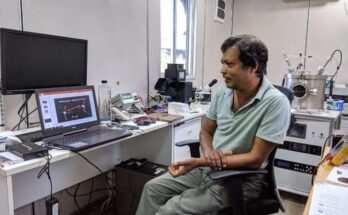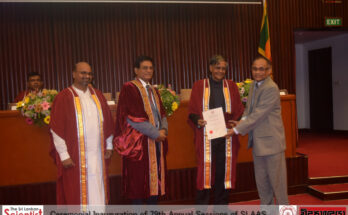We’ve mapped the world, discovered all the continents and sometimes it feels like there’s nothing new to look for, on our little blue planet and beyond. But have you ever thought that this universe is still full of mysteries and burning questions that even step beyond the realm of classical physics?
A stunning disclosure of the late twentieth century was that the universe is not only expanding but expanding with an acceleration. This is in stark contrast to the existing theory that the rate must be slowing down as the universe expanded. Making it more controversial, there was no known mechanism that came up to explain this acceleration at the time of this discovery.
A mysterious driving force known as “Dark Energy” came into play as modern science revelations referred to it as a property of space-time. Another plausible explanation was also brought in to consider dark energy as a quantum effect. This explains that “empty space” is loaded with impermanent particles that materialize and can vanish ceaselessly. Further, it explains that these transient particles are caused by fluctuations of the background field of the universe and are also responsible for carrying electromagnetic, weak, and strong forces between objects. On the contrary, a third interpretation was also brought forward which fabricated dark energy as a completely novel arena, distinct from matter and energy.
However, recent science earns to explain that the accelerating expansion of the universe is the existence of a hypothetical repulsive force that was interpreted as Dark Energy. This powerful repulsion is between normal matter and hidden pockets of antimatter. Accordingly, normal matter and antimatter gravitationally repel each other to create a kind of “anti-gravity” that could replace dark energy as the cause of universe’s expansion.
Thus, the Big Bang Theory and the Dark Energy Theory try to construe the universe’s expansion but were not very promising to reveal a clear understanding of the scenario. As per the theories, the universe must shrink together and finally collapse, if gravitational force exists as the only attraction force. Hence, can the logic behind this expansion of the universe with galaxies repelling each other, be directed towards the repulsive force among celestial bodies in the universe?
The current understanding of gravity is based on the attraction between masses in the universe and is one of the fundamental forces identified as the law of universal gravitation by Sir Isaac Newton. Unlike any other forces which are dual in nature, the gravitational field is unique and has no such duality shown to exist, so far.

Even though general relativity does not specifically recognize a repulsive gravity force as “anti-gravity”, a recent attempt by a Sri Lankan physicist rationalizes the concept with clear evidence to support the existence of force against gravity. Dr. C.K. Gamini Piyadasa’s pioneering study on Anti-gravity is the first ever practically designed study on this major phenomenon in nature that is yet to be recognized. (Dr. C.K. Gamini Piyadasa is a Ph.D. holder in Instrumentation in laser desorption mass spectrometry from the University of Colombo (UOC), Sri Lanka in collaboration with University of Uppsala (UOU), Sweden and is a recipient of many accolades for this unwavering contribution to the field of science.)
The experimental work was conducted at the Department of Electrical and Computer Engineering, University of Manitoba, Canada with the support of the Natural Sciences and Engineering Research Council (NSERC) of Canada. The preliminary studies were carried out in University of Colombo, Sri Lanka and were funded by the Sri Lanka National Science Foundation (NSF) with the further support of Sri Lanka Institute of Nanotechnology (SLINTEC).
Experiential evidence was put forward through the ‘Iodine molecule study’ that demonstrated the force against conventional gravity. The study focused on exploring the upward mobility of iodine molecules (126.9 amu) as they slowly heat-evaporated in a vacuum ~10-5 mbar. The Iodine vapor deposition pattern which depicted an upward movement was deposited on the top surface of the encircled paper, paving the way to evidence-based repulsive gravity force, “anti-gravity.”
The study reveals that this repulsion force, against the direction of gravitational pull is proportional to the thermal energy of the particle. Further, it is also analogous to the gravitational attraction that is proportional to the mass of the particles. Even though the experiment was performed under several geometric clarifications, the altered geometries did not affect the direction of the upward thrust (movement) of the iodine molecules.
This endeavor is well established and exists in nature but, is yet to be recognized in the realm of science. The clouds and cloud particles which are analogs to the universe and galaxies, well depict the basis, although in a cloud, cloud particles are confined to a relatively stationary volume while the elements in the universe are continuously accelerating among each element.
The study results can be explained by existing scientific knowledge; the Einstein equation (E = mc2) which explains that energy is equal to mass times the speed of light squared. On the most basic level, the equation says that energy and mass (matter) are interchangeable.
Hence, the reduction of mass together with the increase of heat energy rises the gravitational repulsion, (or anti-gravity) which grounds for a realistic explanation of the expansion of intergalactic distances (that results in expansion of the universe) with an acceleration. Further, the conversion of mass to energy to a lessening of the attracting gravitational force, conversely increases the repulsive gravitational force known as anti-gravity force. Therefore, it is reasonable and is clear evidence to speculate the existence of both decreasing attractive and increasing repulsive forces in the universe in order to maintain the dynamic nature of the system.
Dr. Piyadasa’s study also points out that this anti-gravity exists not only celestial scale (macro scale) but also in microscopic scale. Once the theory is established, this could lead to better explain all most all the physical phenomena known to physics, by using gravitational attraction and repulsive forces.
Research with the potential to produce controversial findings is important to progress in the sciences. Like the core of any good conspiracy, Dr. Piyadasa’s study has the ring of plausibility driven toward one of the outstanding, decades long debatable problems in physics and cosmology today. Thus, coming up with a revolutionary theory of gravity vs. anti-gravity and Dark Energy may highlight a scientific uprising on a par with static, non-Newtonian components of gravity.
Although this can be considered a scientific saga that strengthens modern physical science, there is still a big hoo-ha among the scientific community for a tug-war between gravity and anti-gravity. However, this endeavor is a pivotal point in the scientific arena, as the core concepts of gravity and anti-gravity were challenged, while re-writing a spanking interpretation for Dark Energy as an elusive idea that may encompass anti-gravity while explicating it.

Uncovering a highly anticipated discovery in physics is not something that happens by chance, it requires prior knowledge, dedication, effort, time, money, manpower and much more to make it happen. Dr. Piyadasa and his team sacrificed a lot for this discovery, before getting their research findings published. Sri Lankan Scientist team is, therefore, indeed thankful to Dr. Gamini Piyadasa for sharing the story behind the discovery with us.
All eyes are now on this discovery. As Bertrand Russell, in The Conquest of Happiness (1930) says, “The happiest in the present day are the men of science.” Thus, living in an era of less attention for new science, this versatile physics breakthrough gives us hope and provide us opportunities to for the budding young physicists to change the world with their knowledge and passion. Eventually, they will realize that there is no limit of for the ideas of physics.
Story sources:
- Piyadasa, C. G. (2011). Anti Gravity-Is It Already Under Our Nose?. Canadian Journal of Pure and Applied Sciences, 5(2), 1585-1588.
- Piyadasa, C. K. (2019). Antigravity, a major phenomenon in nature yet to be recognized. Physics Essays, 32(2), 141-150. DOI: 10.4006/0836-1398-32.2.141
- Piyadasa, C. K. (2020). Antigravity, an Answer to Nature’s Phenomena including the Expansion of the Universe. Advances in High Energy Physics, 2020. DOI: 10.1155/2020/9315491
- Dark Energy, Dark Matter | Science Mission Directorate. (2017). Retrieved from NASA Science Beta Website: https://science.nasa.gov/astrophysics/focus-areas/what-is-dark-energy/
- Sam. (2017, July 23). Dark Energy, What could it be? Retrieved from Skeptic Society Magazine: https://skepticsociety.co.uk/dark-energy-what-it-could-be/





A superb and vivid explanation of Dr Gamini Piyadadasa s.discovery in Ramalka Heshani s fantastic style of writing.A new episode of Science -the antigravity .by a Sri Lankan Scientist .gives an aurora to the the world of versatile physics .